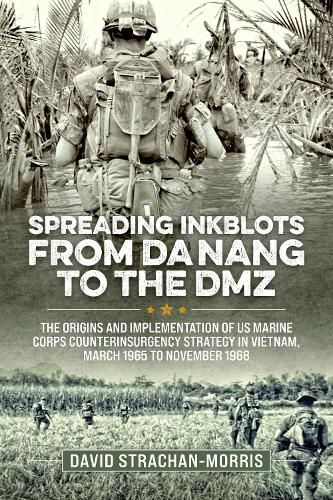Readings Newsletter
Become a Readings Member to make your shopping experience even easier.
Sign in or sign up for free!
You’re not far away from qualifying for FREE standard shipping within Australia
You’ve qualified for FREE standard shipping within Australia
The cart is loading…






During the United States’ involvement in the war in Vietnam, the decision by the US Marine Corps to emphasise counterinsurgency operations in coastal areas was the cause of considerable friction between the Marines and the army commanders in Vietnam, who wanted the corps to conduct more conventional operations. This book will examine the background to the Marines’ decision and place it in the context of Marine Corps doctrine, infrastructure and logistical capability. For the first time, this book brings together the Marine Corps’ background in counterinsurgency and the state of contemporary counterinsurgency theory in the 1960s - combining this with the strategic outlook, role, organisation and logistic capability of the Marine Corps to provide a complete view of its counterinsurgency operations. This book will argue that the US Marine Corps successfully used counterinsurgency as a means to achieve their primary aim in Vietnam - the defence of three major bases in the coastal area in the north of the Republic of Vietnam - and that the corps’ decision to emphasise a counterinsurgency approach was driven as much by its background and infrastructure as it was by the view that Vietnam was a ‘war for the people’. This book is also an important contribution to the current debate on counterinsurgency, which is now seen by many in the military doctrine arena as a flawed or invalid concept following the perceived failures in Iraq and Afghanistan - largely because it has been conflated with nation-building or democratisation. Recent works on British counterinsurgency have also punctured the myth of counterinsurgency as being a milder form of warfare - with the main effort being the wellbeing of the population - whereas in fact there is still a great deal of violence involved. This book will bring the debate ‘back to basics’ by providing an historical example of counterinsurgency in its true form: a means of dealing with terrorist or guerrilla warfare at an operational level to achieve a specific aim in a specific area within a specific period of time.
$9.00 standard shipping within Australia
FREE standard shipping within Australia for orders over $100.00
Express & International shipping calculated at checkout
During the United States’ involvement in the war in Vietnam, the decision by the US Marine Corps to emphasise counterinsurgency operations in coastal areas was the cause of considerable friction between the Marines and the army commanders in Vietnam, who wanted the corps to conduct more conventional operations. This book will examine the background to the Marines’ decision and place it in the context of Marine Corps doctrine, infrastructure and logistical capability. For the first time, this book brings together the Marine Corps’ background in counterinsurgency and the state of contemporary counterinsurgency theory in the 1960s - combining this with the strategic outlook, role, organisation and logistic capability of the Marine Corps to provide a complete view of its counterinsurgency operations. This book will argue that the US Marine Corps successfully used counterinsurgency as a means to achieve their primary aim in Vietnam - the defence of three major bases in the coastal area in the north of the Republic of Vietnam - and that the corps’ decision to emphasise a counterinsurgency approach was driven as much by its background and infrastructure as it was by the view that Vietnam was a ‘war for the people’. This book is also an important contribution to the current debate on counterinsurgency, which is now seen by many in the military doctrine arena as a flawed or invalid concept following the perceived failures in Iraq and Afghanistan - largely because it has been conflated with nation-building or democratisation. Recent works on British counterinsurgency have also punctured the myth of counterinsurgency as being a milder form of warfare - with the main effort being the wellbeing of the population - whereas in fact there is still a great deal of violence involved. This book will bring the debate ‘back to basics’ by providing an historical example of counterinsurgency in its true form: a means of dealing with terrorist or guerrilla warfare at an operational level to achieve a specific aim in a specific area within a specific period of time.